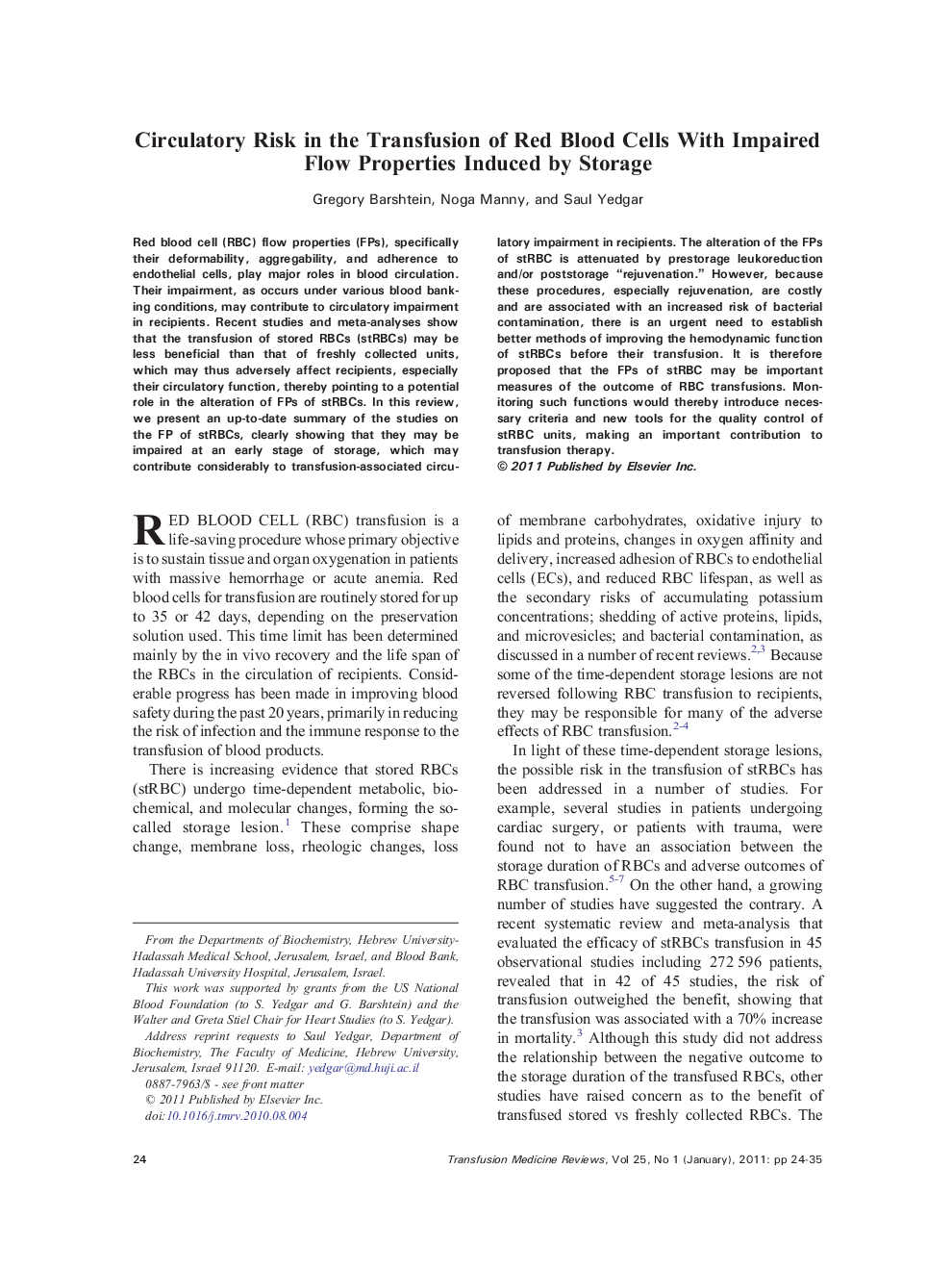| Article ID | Journal | Published Year | Pages | File Type |
|---|---|---|---|---|
| 3336931 | Transfusion Medicine Reviews | 2011 | 12 Pages |
Red blood cell (RBC) flow properties (FPs), specifically their deformability, aggregability, and adherence to endothelial cells, play major roles in blood circulation. Their impairment, as occurs under various blood banking conditions, may contribute to circulatory impairment in recipients. Recent studies and meta-analyses show that the transfusion of stored RBCs (stRBCs) may be less beneficial than that of freshly collected units, which may thus adversely affect recipients, especially their circulatory function, thereby pointing to a potential role in the alteration of FPs of stRBCs. In this review, we present an up-to-date summary of the studies on the FP of stRBCs, clearly showing that they may be impaired at an early stage of storage, which may contribute considerably to transfusion-associated circulatory impairment in recipients. The alteration of the FPs of stRBC is attenuated by prestorage leukoreduction and/or poststorage “rejuvenation.” However, because these procedures, especially rejuvenation, are costly and are associated with an increased risk of bacterial contamination, there is an urgent need to establish better methods of improving the hemodynamic function of stRBCs before their transfusion. It is therefore proposed that the FPs of stRBC may be important measures of the outcome of RBC transfusions. Monitoring such functions would thereby introduce necessary criteria and new tools for the quality control of stRBC units, making an important contribution to transfusion therapy.
